Creating the "Dew Drop on a Rose Petal": the Molecular Pathogenesis of Varicella-Zoster Virus Skin Lesions
- PMID: 37354037
- PMCID: PMC10521358
- DOI: 10.1128/mmbr.00116-22
Creating the "Dew Drop on a Rose Petal": the Molecular Pathogenesis of Varicella-Zoster Virus Skin Lesions
Abstract
Varicella-zoster virus (VZV) is a human alphaherpesvirus that causes varicella (chicken pox) as the primary infection in a susceptible host. Varicella is very contagious through its transmission by direct contact with vesicular skin lesions that contain high titers of infectious virus and respiratory droplets. While the clinical manifestations of primary VZV infection are well recognized, defining the molecular mechanisms that drive VZV pathogenesis in the naive host before adaptive antiviral immunity is induced has been a challenge due to species specificity. This review focuses on advances made in identifying the differentiated human host cells targeted by VZV to cause varicella, the processes involved in viral takeover of these heterogenous cell types, and the host cell countermeasures that typically culminate in a benign illness. This work has revealed many unexpected and multifaceted mechanisms used by VZV to achieve its high prevalence and persistence in the human population.
Keywords: herpesvirus; varicella-zoster virus; viral pathogenesis.
Conflict of interest statement
The author declares no conflict of interest.
Figures
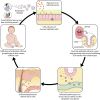
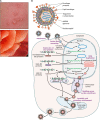
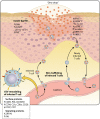





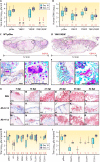
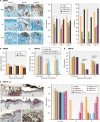
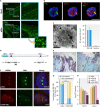




Similar articles
-
Varicella-zoster virus.Clin Microbiol Rev. 1996 Jul;9(3):361-81. doi: 10.1128/CMR.9.3.361. Clin Microbiol Rev. 1996. PMID: 8809466 Free PMC article. Review.
-
Varicella-Zoster Virus Activates CREB, and Inhibition of the pCREB-p300/CBP Interaction Inhibits Viral Replication In Vitro and Skin Pathogenesis In Vivo.J Virol. 2016 Sep 12;90(19):8686-97. doi: 10.1128/JVI.00920-16. Print 2016 Oct 1. J Virol. 2016. PMID: 27440893 Free PMC article.
-
Varicella-zoster virus: molecular controls of cell fusion-dependent pathogenesis.Biochem Soc Trans. 2020 Dec 18;48(6):2415-2435. doi: 10.1042/BST20190511. Biochem Soc Trans. 2020. PMID: 33259590 Free PMC article. Review.
-
VZV: pathogenesis and the disease consequences of primary infection.In: Arvin A, Campadelli-Fiume G, Mocarski E, Moore PS, Roizman B, Whitley R, Yamanishi K, editors. Human Herpesviruses: Biology, Therapy, and Immunoprophylaxis. Cambridge: Cambridge University Press; 2007. Chapter 37. In: Arvin A, Campadelli-Fiume G, Mocarski E, Moore PS, Roizman B, Whitley R, Yamanishi K, editors. Human Herpesviruses: Biology, Therapy, and Immunoprophylaxis. Cambridge: Cambridge University Press; 2007. Chapter 37. PMID: 21348076 Free Books & Documents. Review.
-
A Novel Human Skin Tissue Model To Study Varicella-Zoster Virus and Human Cytomegalovirus.J Virol. 2020 Oct 27;94(22):e01082-20. doi: 10.1128/JVI.01082-20. Print 2020 Oct 27. J Virol. 2020. PMID: 32878893 Free PMC article.
Cited by
-
Immunogenicity and safety of the domestic and imported live-attenuated varicella vaccine in healthy Chinese populations: a systematic review and meta-analysis.BMC Infect Dis. 2025 Jul 5;25(1):897. doi: 10.1186/s12879-025-11275-w. BMC Infect Dis. 2025. PMID: 40618017 Free PMC article.
-
Clinical and radiological features of a cluster of immunocompetent adolescents with varicella pneumonia: a descriptive study.J Thorac Dis. 2024 Jul 30;16(7):4379-4390. doi: 10.21037/jtd-24-149. Epub 2024 Jul 23. J Thorac Dis. 2024. PMID: 39144316 Free PMC article.
-
The live attenuated varicella-zoster virus vaccine vOka: Molecular and cellular biology of its skin attenuation.Hum Vaccin Immunother. 2025 Dec;21(1):2482286. doi: 10.1080/21645515.2025.2482286. Epub 2025 Mar 28. Hum Vaccin Immunother. 2025. PMID: 40153527 Free PMC article. Review.
References
-
- Arvin AM, Abendroth A. 2021. Varicella-zoster virus, chapter 13. In Howley PM, Knipe DM. (ed), Fields virology, volume 2, 7th edition. Lippincott Williams & Wilkins, Philadelphia, PA.
-
- Gershon A, Marin M, Seward JF. 2018. Live attenuated varicella vaccine, p 1145–1180. In Plotkin S, Orenstein WA, Offit PA, Edwards KM (ed), Vaccines. WB Saunders, Philadelphia, PA.
Publication types
MeSH terms
Grants and funding
LinkOut - more resources
Full Text Sources
Medical

